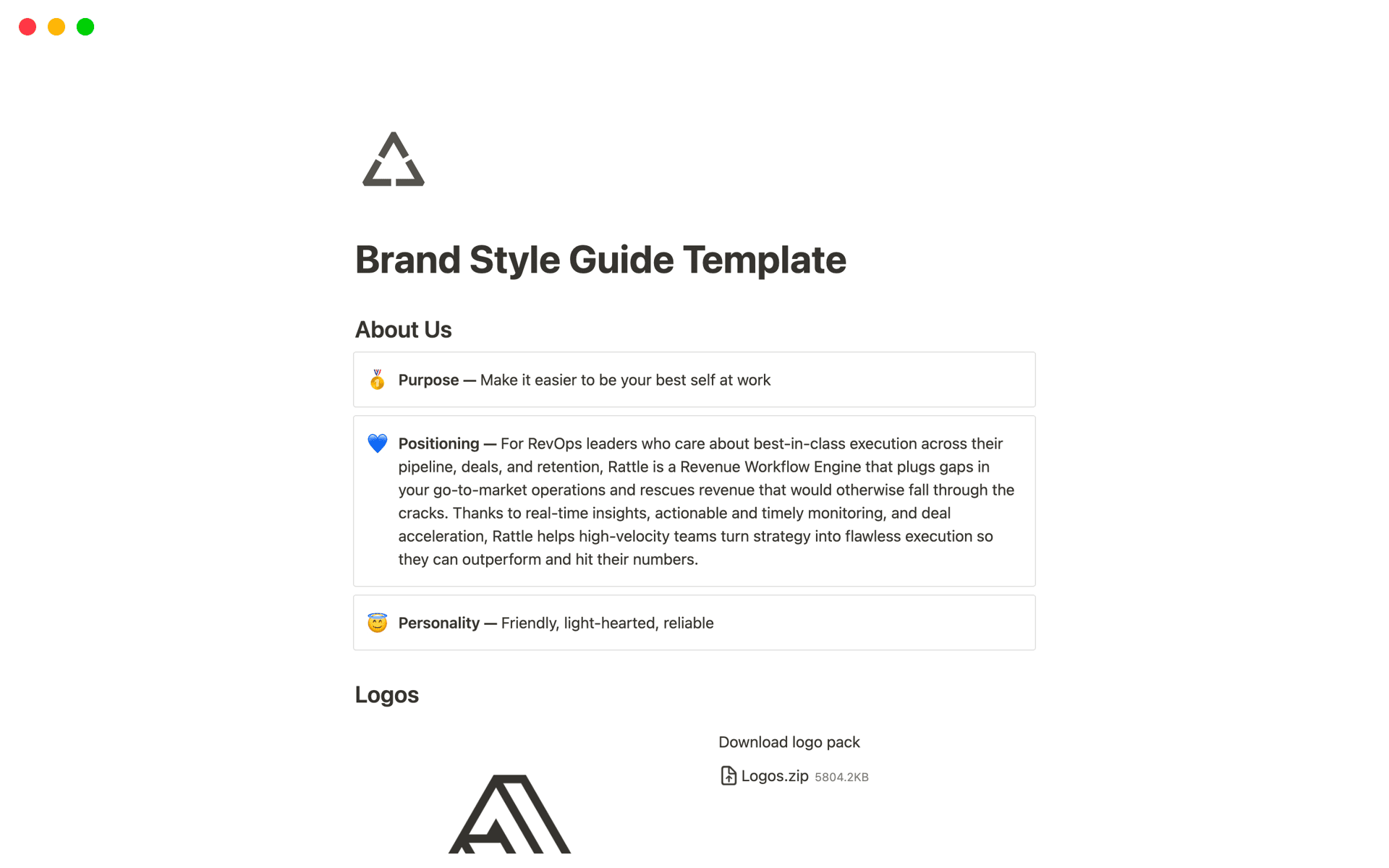For Growth Marketers, establishing and maintaining a consistent brand identity across all platforms and mediums is fundamental to long-term engagement and recognition. Brand Guidelines serve as a centralized reference for how a brand should be presented, ensuring consistency and helping to build a strong, coherent brand image. A Brand Guidelines template in Notion can streamline this process, providing a structured, accessible framework that can be easily updated and shared with team members and external partners.
Before diving into creating your own Brand Guidelines, consider exploring the templates mentioned below to simplify the process and ensure a solid foundation for your branding efforts.
What Should Brand Guidelines Templates Include?
Choosing the right Brand Guidelines template is crucial for maintaining consistency across your marketing efforts. Here are key components to look for in a high-quality template:
Logo Usage - Details on how to use the logo, including acceptable colors, sizes, and spacing to ensure brand consistency.
Color Palette - A clear presentation of the brand's color scheme, including primary and secondary colors with specific color codes (RGB, CMYK, Pantone).
Typography - Guidelines on the typefaces to use, including hierarchy and styles for different types of content to maintain a cohesive look.
Voice and Tone - Instructions on the brand’s writing style and tone of voice to be used in all communications to embody the brand's personality.
Selecting a template that comprehensively covers these aspects will ensure your brand is represented consistently and professionally across all platforms.
What Should Brand Guidelines Templates Avoid?
Choosing the right Brand Guidelines template is crucial for maintaining a consistent brand identity. However, some features can do more harm than good. Here are key elements to steer clear of:
Overly Complex Layouts: Templates with too many intricate design elements can be confusing and detract from the main content. Simplicity is key to clear communication.
Generic Fonts and Colors: Avoid templates that do not allow customization of fonts and colors. Your brand's uniqueness should be reflected in your guidelines.
Irrelevant Content Sections: Some templates include unnecessary sections that may not apply to your brand. Opt for templates that are adaptable and relevant to your specific needs.
Remember, the best template is one that serves as a clear, concise, and reflective medium for your brand's vision and values.













